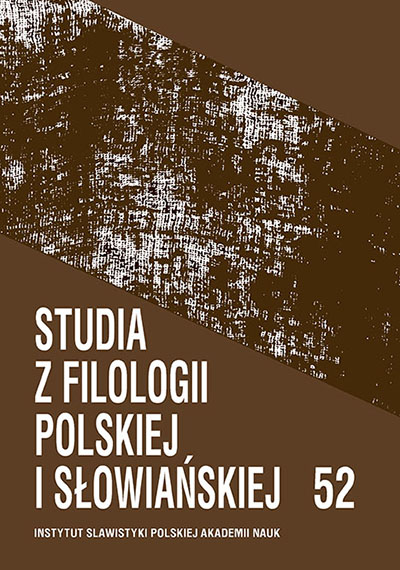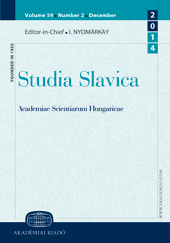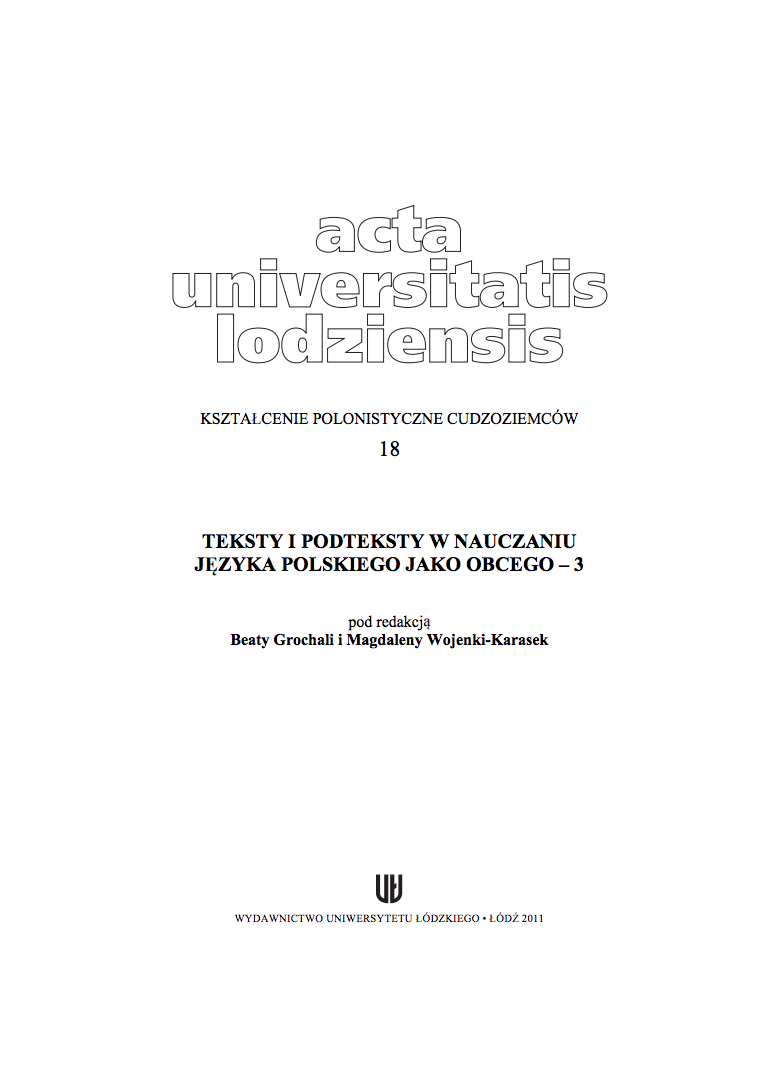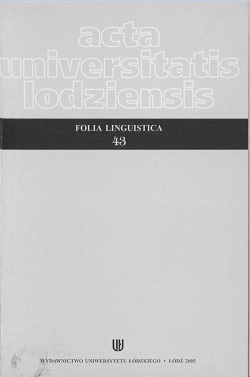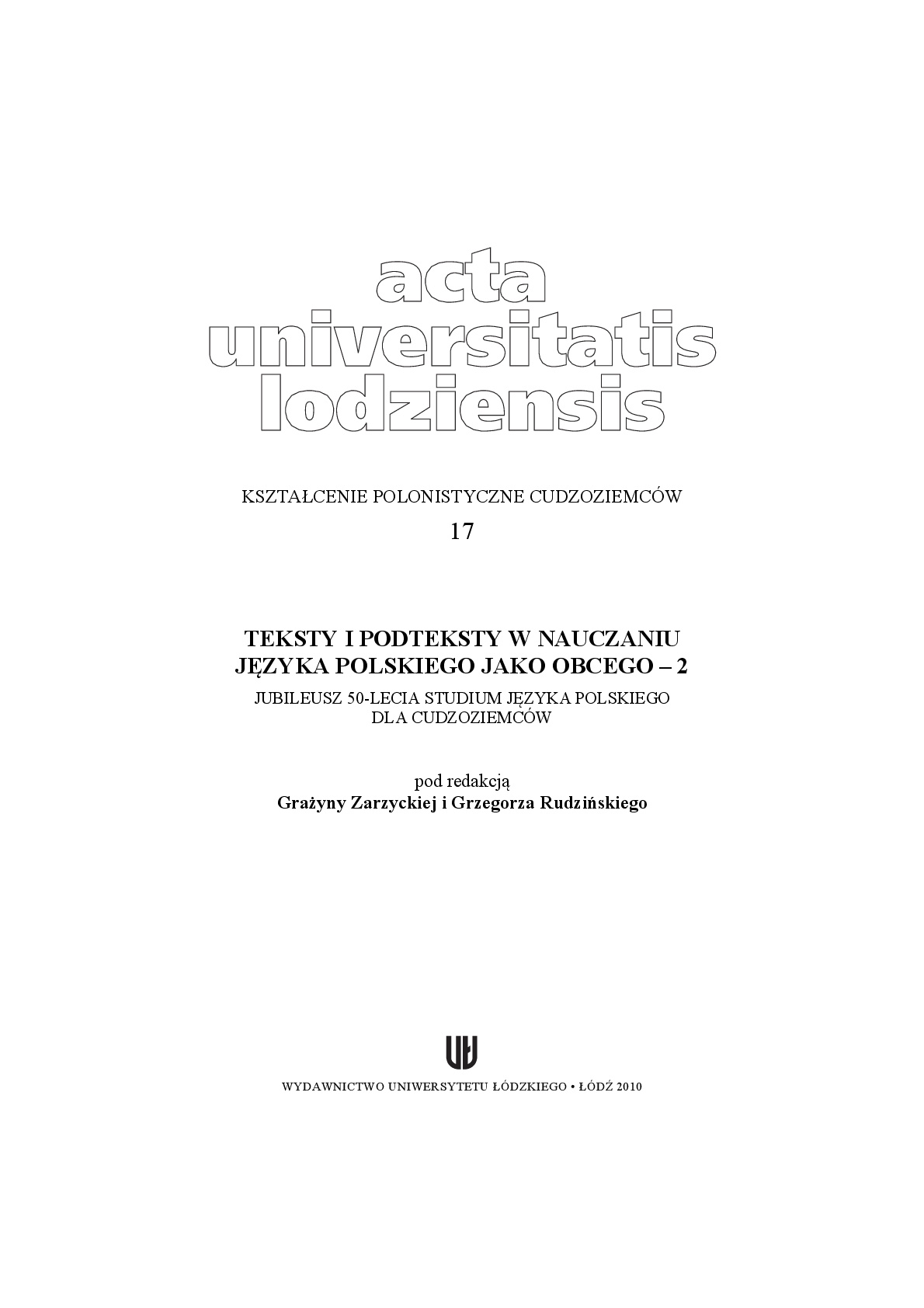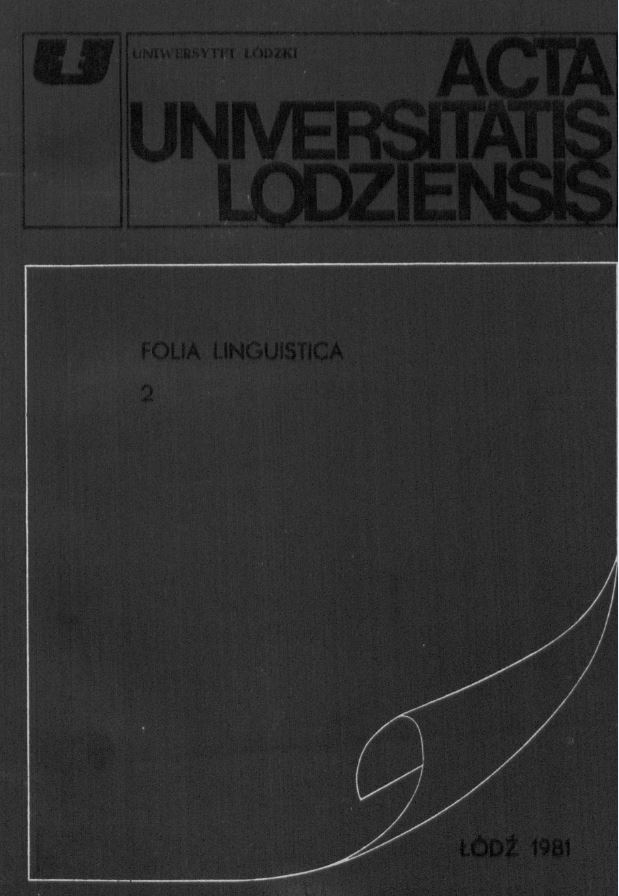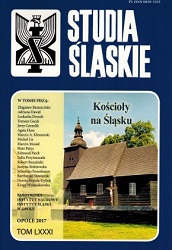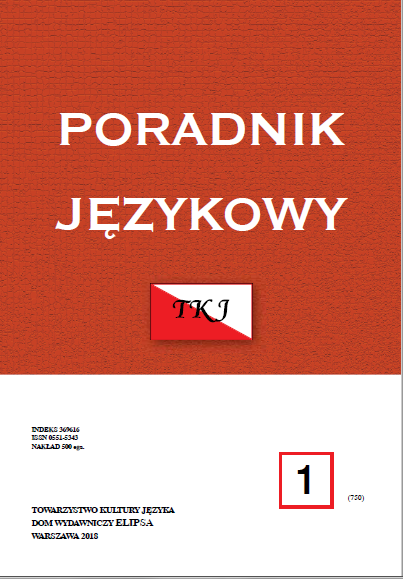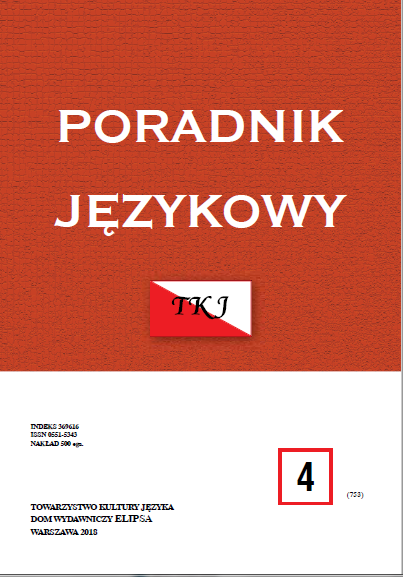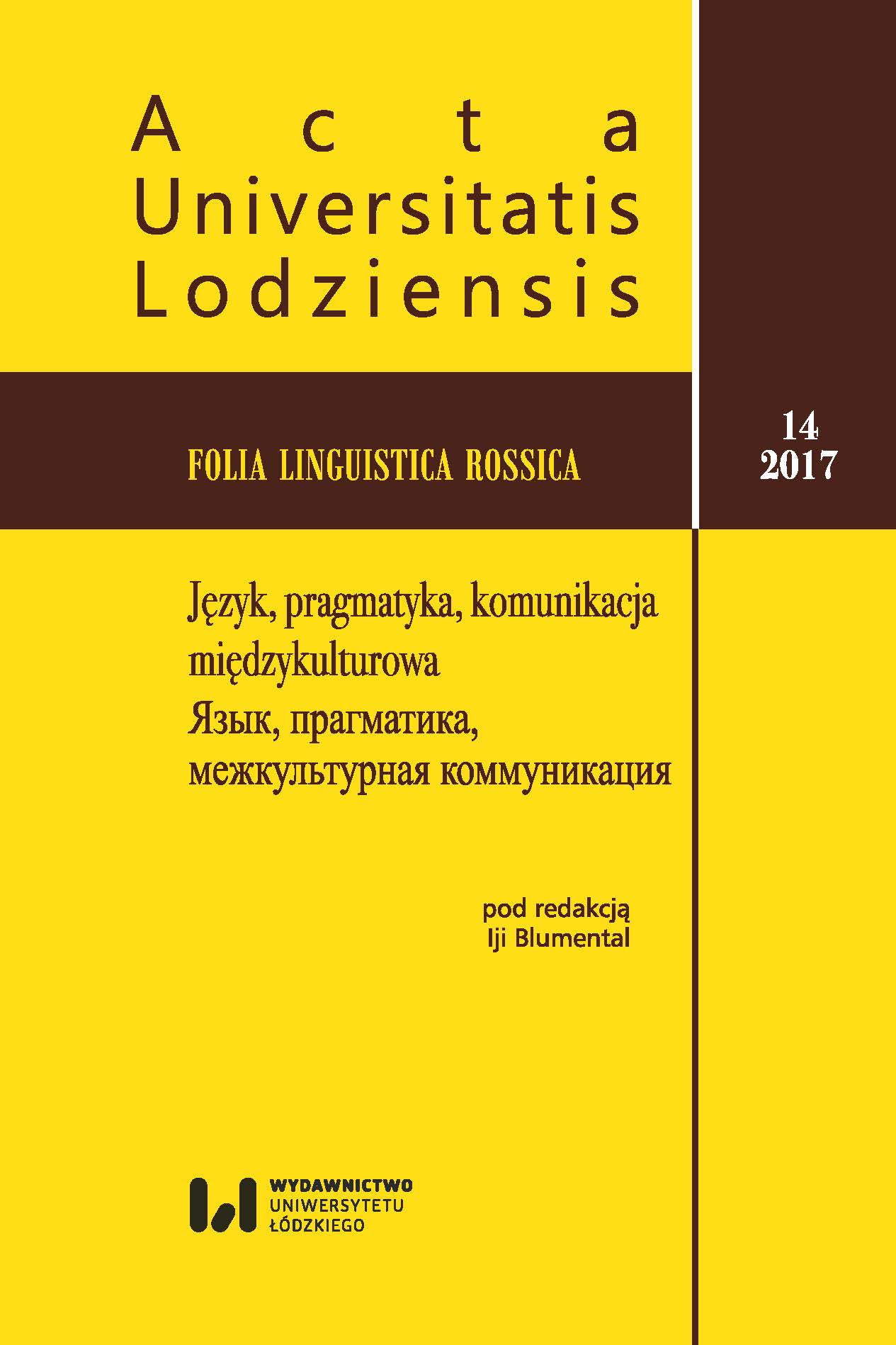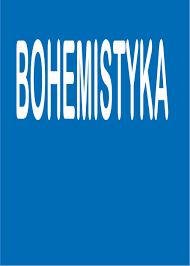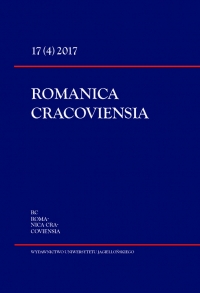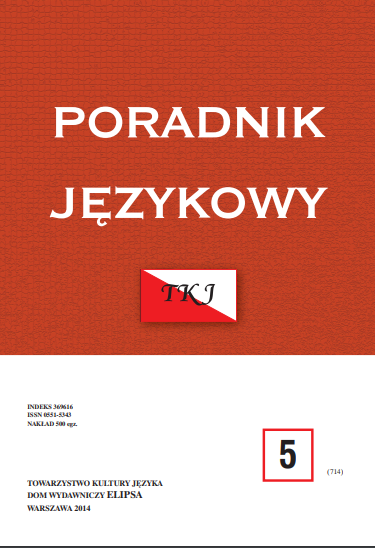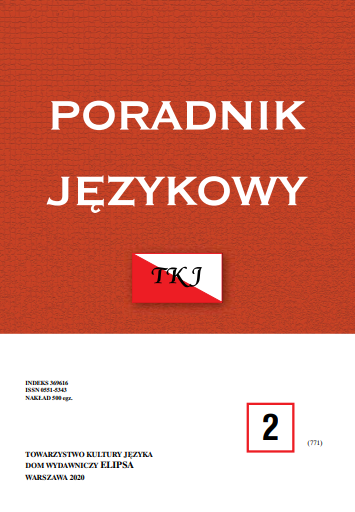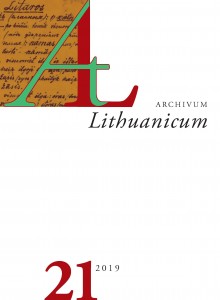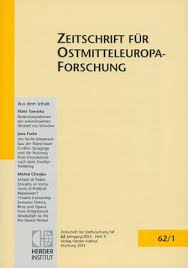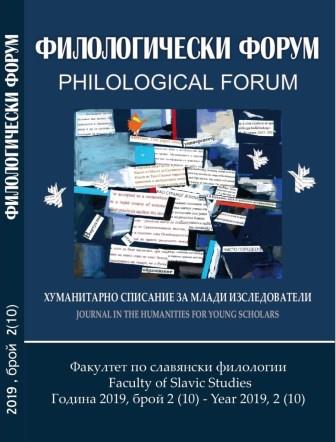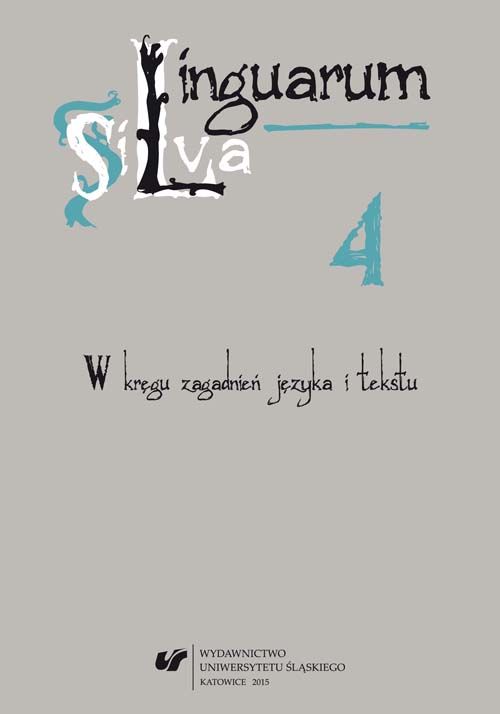
Wykorzystanie pomiarów antropometrycznych w badaniach artykulacji samogłosek (na materiale polskim)
The paper contains an original method of analysis of different articulatory sections of vowels (namely, roentgenograms and articulograms). The proposal is based on measurements of precisely specified points within the articulators. Being the most important and related to the palatal and alveolar processes, the position of the highest point on the surface of the tongue is vital for the proper interpretation of a given articulation. In order to measure the location of the above-mentioned point, position vectors were used. The absolute coordinates of the vectors were converted into relative values, i.e. related to the extreme positions of the tongue observed in the analyzed material. As a result, it was possible to compare the results obtained regardless of the size of particular illustration of speech organs. In total, it was assumed that the tongue would reach 49 possible positions measured in relation to most extreme position typical for vowels [I a o u]. Each recognized articulation was transcribed with the International Phonetic Alphabet. As for the vowel labialization, a separate procedure was used which involved measuring the following distances: between the lips, the incisors and between the upper lip and the upper incisors. Those measurements allowed to ascertain up to 6 different types of labialization. The introduced method was also illustrated with an example analysis of Polish vowels. The examples were adopted both from the latest research and older publications. In the discussion, the advantages and possible applications of the procedure were pointed out as well as limitations and possible refinement of some of its elements.
More...
